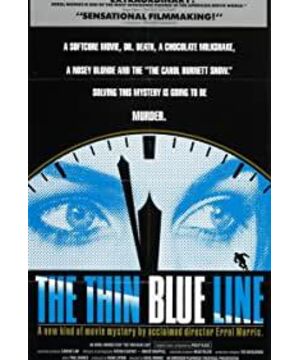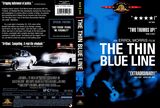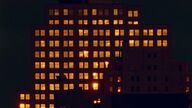The film uses a semi-documentary method of reproducing the facts to track an unjust case of murdering a police officer, and uses a simulated method to "reproduce the truth" and restore the process of the case. The film brought the case to the table by redefining the murder case ten years ago. From this, many new questions have arisen, which almost cover why the case was settled hastily at that time, and even why such a misjudgment occurred. The film also made an explanation to the audience one by one. Judging from the content, the film is basically composed of various close-up shots, such as guns, ashtrays, police cars, lights... and the testimony of various persons involved. The things that appear in the shots are related to the testimony. When the close-up of things and the background music are combined, the effect given by the whole film is relatively terrifying, it is the kind of cold horror, plus the picture effect, I thought I was watching screaming. The director is good at supplementing case materials and details with close-up shots, and is good at creating suspense with limited and incomplete shots, so as to attract the attention and thinking of the audience. It's ironic to see a barrage saying, "Because the police didn't get anything, someone will be wronged and convicted." And body movements make their identities and emotions differentiated. When the characters related to the case narrate the case, the effect presented by the film is relatively virtual. The traces of the filming and production are revealed, so that the audience can be clearly told that this is not a complete documentary record of the event. Looking at this method from another angle, it also gives the audience a certain space for imagination, making the events in the whole film more full. The director gives different angles of the same scene, both in testimony and in close-ups. The meaning of each scene also becomes different. It also lets the audience know that the angles of each scene are multi-faceted. Interspersed narratives and expressions from different angles promote the development of the case and allow the results to be revealed slowly.
View more about The Thin Blue Line reviews









